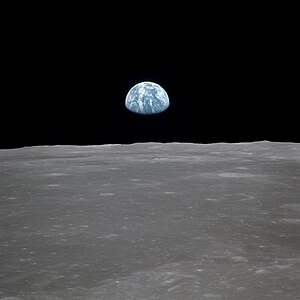
- Image via Wikipedia
Adding aerosols to the atmosphere will not counter global warming in all regions.
Attempting to offset global warming by injecting sunlight-reflecting gases into the upper atmosphere isn’t the quick fix for global climate change that advocates believe it might be, a new study finds.
In a paper published July 18 in Nature Geoscience, Kate Ricke, a climate physicist at Carnegie Mellon University in Pittsburgh, Pennsylvania, and her colleagues show, by modeling, that not only could solar-radiation management lead to declines in rainfall in the long term, but its effects will also vary by region. Some places will be over-cooled by atmospheric changes that are too small to be effective for their neighbors.
The gases under consideration are sulfur compounds that would produce sulfate aerosols in the upper atmosphere. Geoengineering advocates have proposed injecting large quantities of these materials into the stratosphere, either by shooting them up in artillery shells or releasing them from high-flying airplanes.
Once there, they would disperse into a thin, bright haze that would reflect enough sunlight back into space to partially or completely offset global warming.
The goal would be to mimic the effects of volcanoes eruptions such as the 1991 eruption of Mount Pinatubo in the Philippines, which blasted enough sulfates into the stratosphere to temporarily reduce the global temperature by nearly half a degree. Geoengineers propose mimicking this on ever-expanding scales, so that increasing levels of greenhouse gases are offset by ever-greater levels of sunlight reduction.
The new study found that it is fairly easy to design sulfate-injection scenarios that keep the temperature stable until 2080. But, unfortunately, the change in sunlight alters other weather patterns. “It changes the distribution of energy in the troposphere so that it becomes more convectively stable,” Ricke says. The result: decreasing precipitation.
Temporary fix
Regional effects are also important. For example, Ricke says, her study found that levels of sulfate that kept China closest to its baseline climate were so high that they made India cold and wet. Those that were best for India caused China to overheat. She notes, however, that both countries fared better either way than under a no-geoengineering policy.
Related articles by Zemanta
- Geoengineering can’t please everyone (nature.com)
- Geoengineering fix won’t suit everyone (newscientist.com)
- Engineering a cooler Earth. (sciencenews.org)
- Books on Science: When the Day After Tomorrow Has Come (nytimes.com)









